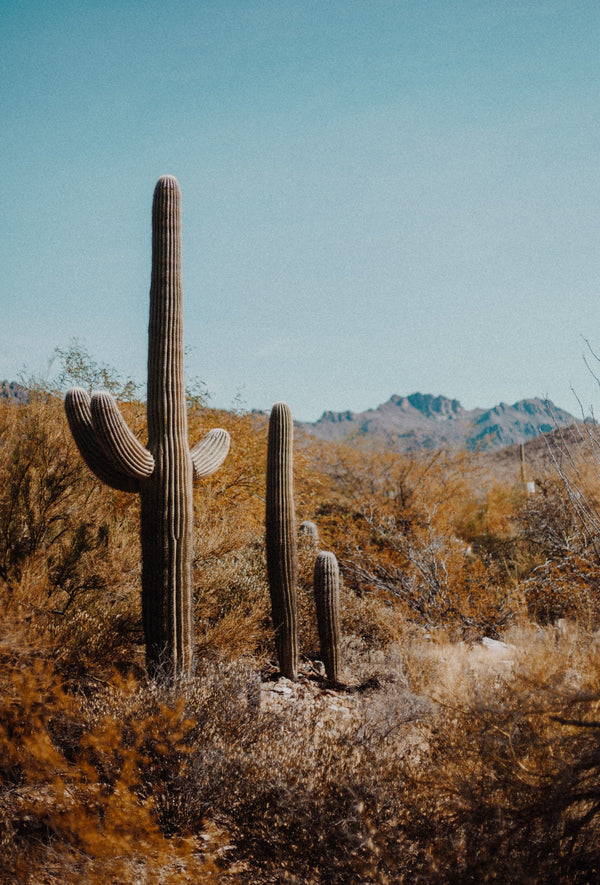
Cactus: Tea for the Apocalypse
A season without water can be detrimental to tea plants. In fact, very few plants can survive without quenching their thirst on a regular basis. At the Maya Tea Company, we understand this very well—our headquarters are planted smack-dab in the middle of the Sonoran desert, where only the strongest of flora survive. Our desert shrubs are some of the most hardcore plants in the world, growing year-round despite an average rainfall of only ten inches per year. And then, there is the infamous cactus. Beneath its array of threatening spines is a vault of water, stored away within their bodies during the rainy season to last throughout the year.
Plants that grow in moister climates haven’t had to develop the survival techniques of the cactus. Their cushioned lifestyle has not prepared them for months without rainfall, and unfortunately, that is what some of these tea-growing regions have been experiencing in recent years, much to the detriment of the crops. No end is within sight—scientists are predicting a rise in global temperatures, unpredictable weather patterns, and long, uninterrupted seasons of drought. If these predictions are realized, our beloved tea plants could be in very real danger.
But not if Dr. T S Barman can help it.
Dr. Barman has been working with the Department of Plant Physiology and Breeding at the Tocklai Experimental Tea Research Station for thirty-seven years, and has spent his most recent time developing a line of tea plants that are tolerant to drought. His last twenty-one clones can withstand three to four consecutive months without any water at all. Minus the thorns, these tea plants are nearly as hardcore as the desert cactus.
Yes, I said “Experimental Tea Research Station.” For many of us, myself included, this throws up some red flags. Many of the foods that we regularly consume have been genetically altered in some way (corn, for example), and a growing number of consumers are questioning the healthful properties of these “experimental” goods. Are we to be drinking GMOs, too? Even if we can produce an altered line of tea plants, should we? Or ought we just let nature take its course?

Dr. Barman reassures us: he works with plant physiology, not genetics. It is a matter of breeding, not altering, and his line of plants has been developed through careful cloning rather than genetic surgery. He is not changing the nature of the tea plants, but only helping it along. The health properties of his clones are identical to those of any other tea bush. What is different is only their treatment of water, which is surprisingly reminiscent of the cactus—they too store water within their core for use in times of scarcity.
This is great news for tea producers—it means that they may continue to successfully grow tea even as global weather begins to transform. It means that they are able to adapt to a changing environment, rather than struggling to make the environment match their needs. It is also great news for us, the tea drinkers. It means that we may cling to our healthy tea habits despite a changing climate. It means that we may sit back and watch our landscape transform, for the better or for the worse, with a cup of tea in hand. Something about that is reassuring to me.
